The Maltese are small dogs in the toy group or lap dog group. Maltese feature a dense, glossy, single coat of pure white or pale ivory hair without curls. They typically weigh between 7 and 9 pounds and measure around 8 to 9 inches tall. Likely descended from spitz-type canines, some researchers believe Maltese were among the first dogs raised as companions. Here is a list of 10 incredible Maltese facts that explain what makes these dogs so special.
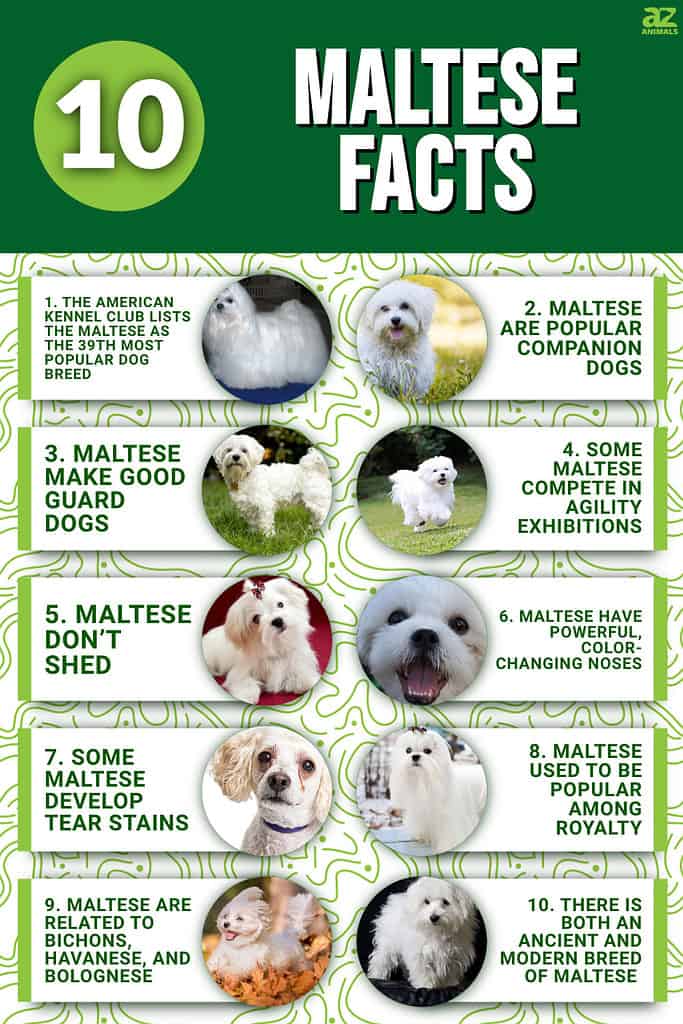
10. There Is Both an Ancient and Modern Breed of Maltese

The teacup Maltese breed is a modern breed, created in the 20th century.
©May Rice/Shutterstock.com
We’ll start by looking at the origins of the Maltese. The term Maltese actually refers to different breeds, both an ancient variety from the island of Malta and the modern breed we know today. According to evidence, Maltese date back to around 3500 BC, making this by far one of the oldest Maltese facts on this list.
Ancient texts from Rome and Greece reference Maltese, and writers associate the dog Maltese with the island of Malta. Researchers believe the name Maltese is derived from either the Latin and Greek words for Malta, Melita, or the island of Mljet near modern Croatia, also known as Melita.
9. Maltese Are Related to Bichons, Havanese, and Bolognese
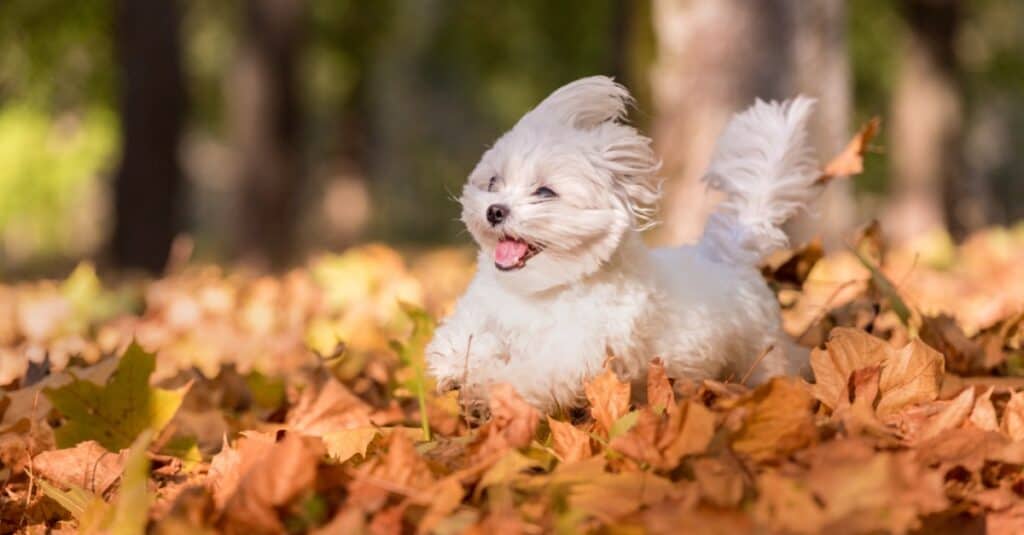
The Maltese is related to three well-known breeds.
©iStock.com/Mindaugas Dulinskas
The Maltese, by all accounts, is an ancient breed that has survived and evolved over centuries. Therefore, it should be no surprise that it is related to several modern breeds. Over the years, the Maltese has come into contact with other dog breeds from around the Mediterranean. Years of inbreeding have since led to the creation of several distinct dog breeds.
Today, the Maltese is closely related to three well-known modern breeds: the Bichon, the Bolognese, and the Havanese. All three dogs belong to the toy dog or lap dog category and measure between 6 and 16 pounds. Meanwhile, both the Bichon and Bolognese feature predominantly white or all-white coats like the Maltese, while the Havanese coat can appear white, red, brindle, or mixed.
8. Maltese Used to Be Popular Among Royalty
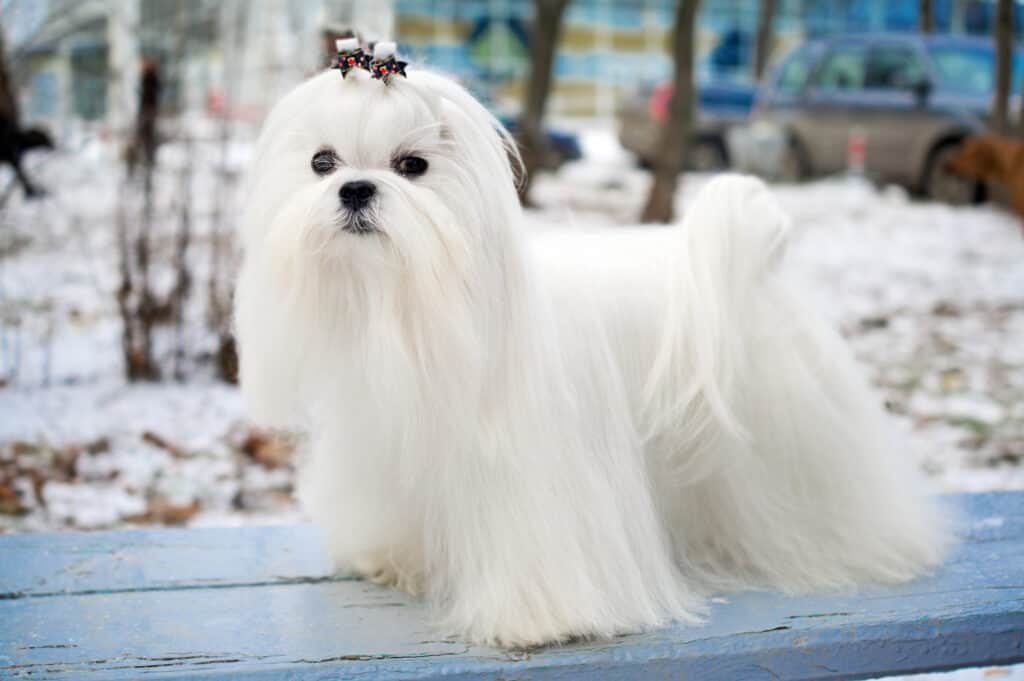
Maltese are noble dogs that were popular with royalty and upper classes for centuries.
©iStock.com/Laures
As previously mentioned, the Maltese appears to have been quite a common if not a popular dog in antiquity. This assertion is backed up by the fact that the dog is mentioned in various ancient texts, including those written by Aristotle and Diogenes. The dog’s white coat, grace, and diminutive size all contributed to its appeal.
In particular, it appears that the Maltese was one of the most popular breeds among royalty and the upper classes for centuries. Accounts tell of Maltese dogs sold for exorbitant amounts as far back as 1500, and statues and tombs for Maltese dogs date back to Ancient Greece. From Roman governors to European royals, the Maltese has seemingly found a way to capture the heart of some of the most powerful and wealthy people in history.
7. Some Maltese Develop Tear Stains
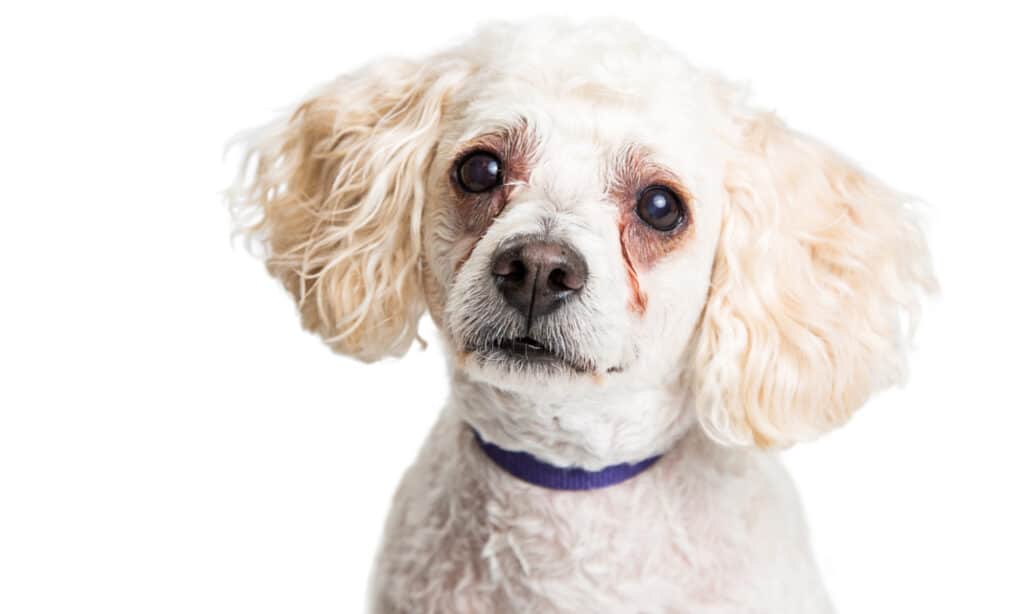
Tear stains are more visible on white and cream-colored dogs.
©GoodFocused/Shutterstock.com
At some point or other, many white-coated dog breeds develop reddish-colored stains around their eyes, muzzles, and toes. Known as tear stains, these red stains are easy to see against a white coat. While they may appear just an eye sore, eye stains reveal more about your dog’s health than at first impression.
If your Maltese develops tear stains, your pup may have an undiagnosed medical condition. Tear stains can be caused by a number of issues, including blocked tear ducts, allergies, ear infections, or environmental problems. In the event your Maltese gets tear stains, look into obvious culprits, including the quality of your pet’s food and water and eye and coat hygiene.
6. Maltese Have Powerful, Color-Changing Noses

The color of Maltese dog’s nose can change from black to pink.
©TracyUnicorn/Shutterstock.com
It’s well-known that dogs possess powerful noses. According to some scientists, a dog’s sense of smell is anywhere from 10,000 to 100,000 times stronger than a person’s. That means your Maltese has a nose much more powerful than your own, so you’ll want to be sensitive to your dog’s aversion and preference for smells.
Not only do Maltese have powerful noses, but they can also change color. While normally black, a Maltese’s nose can turn pink for a number of reasons. First of all, age plays a factor, as a Maltese’s nose can change color as it ages. Additionally, not enough sunlight can also cause a pink nose, which is why this condition is sometimes called a “snow nose” or “winter nose.” Inversely, too much sun can also bleach a Maltese’s nose pink, so you’ll want to pay attention, so your dog’s nose doesn’t sunburn!
5. Maltese Don’t Shed
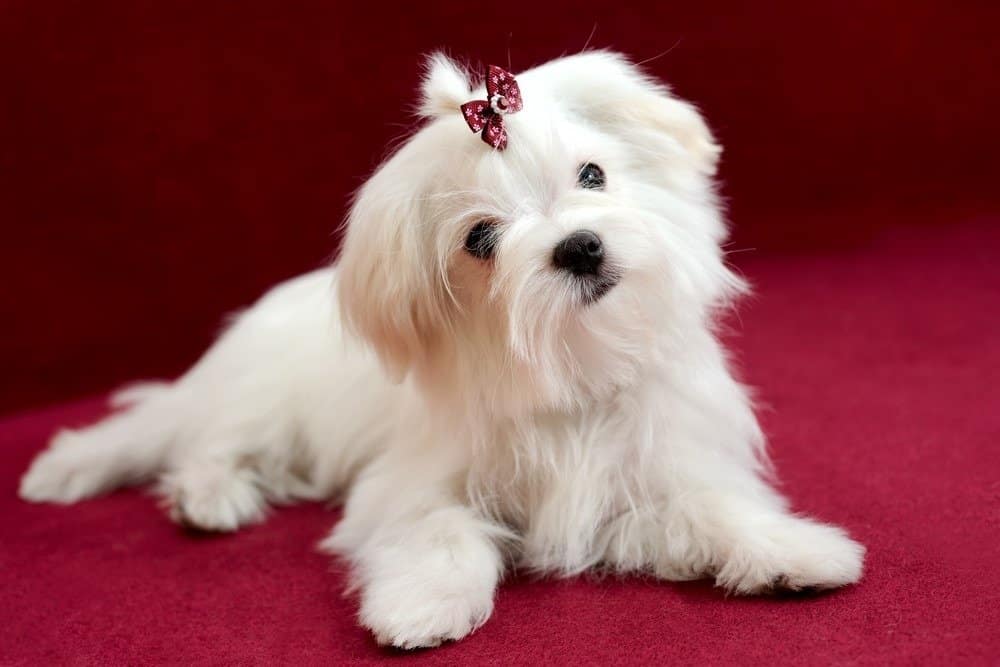
Maltese do not shed as much as some dogs.
©Arthur Lookyanov/Shutterstock.com
Next up, we have one of the Maltese facts that is sure to make some dog owners happy, particularly those who enjoy a clean home. Unlike many dogs, Maltese are considered hypoallergenic dogs and do not shed as much as other dogs. This makes them much easier to groom and means you don’t have to worry much about picking their hair off your furniture or clothes.
That being said, Maltese do shed at times, so don’t expect to avoid grooming and hair problems altogether. Maltese possess a single coat, so they aren’t affected by seasonal shedding as much as dogs with double coats, but the temperature still plays a factor. Moreover, a Maltese may shed more due to certain health conditions. Changes in hormones, age, stress, and poor diets can all cause your Maltese to stress more than normal.
4. Some Maltese Compete in Agility Exhibitions

Maltese are quite agile.
©Kimrawicz/Shutterstock.com
In recent years, there has been a rise in interest in a variety of canine competitions. Among dog sports, agility competitions have proved to be a favorite among enthusiasts and the general public. It’s thrilling to watch dogs rush about a complicated course as fast as possible, jumping obstacles, racing up structures, and running through tunnels.
Maltese are easily trainable and quite intelligent. While they may seem small and unathletic, in reality, they are quite agile. Their combination of quick reflexes and receptiveness to training has led to them being a mainstay in agility exhibitions.
3. Maltese Make Good Guard Dogs

Maltese make capable guard dogs if you aren’t looking for a large, imposing-looking guard dog breed.
©Tomsickova Tatyana/Shutterstock.com
This next entry on our list of Maltese facts is also one of the most surprising. When most people think of guard dogs, they tend to think of large, imposing-looking breeds. Dobermans, Mastiffs, German Shepherds, and Rottweilers all top the list of most popular guard dog breeds, and it’s easy to see why. That said, they have some competition from the Maltese.
You may be surprised to learn that Maltese actually make quite capable guard dogs. What they lack in size, they more than make up for in bravery. Maltese are extremely alert and will not hesitate to protect their loved ones from perceived threats. They will readily bark at strangers, so it’s important to train your Maltese not to be overprotective to avoid having a noisy household.
2. Maltese Are Popular Companion Dogs
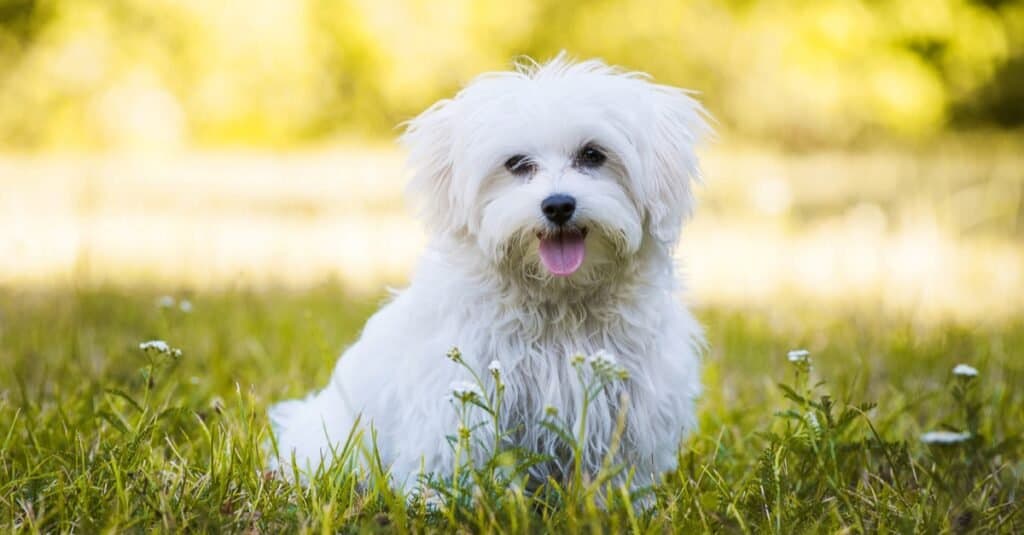
Maltese dogs love to be cuddled and thrive on human attention.
©Dora Zett/Shutterstock.com
Throughout history, most dogs served as working animals. Some pulled sleds, while others helped to hunt game or protect livestock from predators. On the other hand, some were raised to mostly act as companions. Many modern breeds have been bred solely for this purpose.
Despite its long history, the Maltese has always mostly served as a companion dog. Thanks to their charming, easy-going nature, they will easily adapt to almost any environment. They’re happy to live in a small apartment or large house, and they’re easy to take on trips due to their size. Maltese love people and to be spoiled with attention, so it’s no wonder they were popular among royalty and commoners alike.
1. The American Kennel Club Lists the Maltese as the 39th Most Popular Dog Breed

Maltese remains quite popular in the United States.
©Sannse, CC BY-SA 3.0, via Wikimedia Commons – License
Americans love their dogs, and some breeds enjoy a high level of popularity. Every year, the American Kennel Club publishes a list of the most popular dog breeds in America. The usual suspects usually claim the top spots – Retrievers, French Bulldogs, German Shepherds, and Poodles, to name a few. However, the Maltese perform rather well in these polls.
In 2021, the AKC ranked the Maltese as the 39th most popular dog breed in the United States. While the Maltese may not be as popular as it was among royalty in ancient times, it remains a sought-after breed.
The photo featured at the top of this post is © Dora Zett/Shutterstock.com
Ready to discover the top 10 cutest dog breeds in the entire world?
How about the fastest dogs, the largest dogs and those that are -- quite frankly -- just the kindest dogs on the planet? Each day, AZ Animals sends out lists just like this to our thousands of email subscribers. And the best part? It's FREE. Join today by entering your email below.
Thank you for reading! Have some feedback for us? Contact the AZ Animals editorial team.






